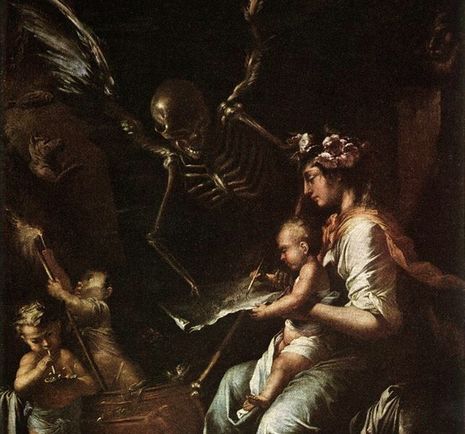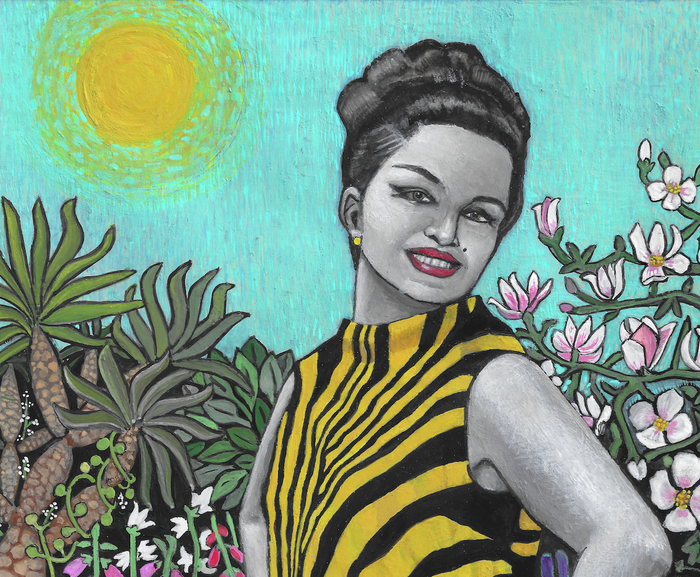All treats no tricks: Varsity’s haunting Halloween favourites
Just in time for Halloween, the Varsity Arts team is here with a list of their most haunting art and literature favourites. Have a muse over these spine-chilling recommendations to get you in the mood for spooky season.

‘Bat’ by D.H Lawrence
This poem sees a man’s expatriate idealism disturbed by a swarm of bats at sundown. Tantalised but kept out of their strange language, Lawrence grows a little resentful, embarrassed even. He tries out his own poetic echolocation, repeating and reforming images in hope to make out their shape more clearly. For those who get the questions wrong on Eggheads.
The works of Holly Warburton
An underrated British artist whose works evoke an eerie and otherworldly atmosphere, her digital paintings are melancholic in spite of their bright colours and often conceal tiny ghost-like figures within their expansive urban and pastoral backdrops. ‘Chaos’ and ‘Crossing Paths’ are two of my favourites.
‘The Doll’s Alphabet’ by Camilla Grudova
With child-like, deadpan richness, Camilla Grudova’s narrators unstitch themselves, turn wolfish, trade rats’ skulls for ‘nice blue dresses’, and try to survive a world in which being Manless is an offence. In The Doll’s Alphabet, Grudova’s only short story collection, the weird is everything, and it smells like ‘tinned meat.’
"With child-like, deadpan richness, Camilla Grudova’s narrators unstitch themselves"
‘I hear a fly buzz when I died’ by Emily Dickinson
The paradoxical title opens a resoundingly haunting poem. Deathly stillness is punctuated by the earthly fly - the entire poem occupies somewhere in between. This atmospheric poem is as unshakeable as the buzzing fly.
‘L’Umana Fragilita’ – Salvator Rosa
Housed in the Fitzwilliam Museum, the sinister work of artist Salvator Rosa captures the universal, eternal theme of human fragility. Surrounded by a host of mementos mori, a portrait of the artist’s mistress sits passively, the figure of a child placed on her knee, his hands clasped by the bony fingers of death, representing Salavtor’s deceased son, Rosalvo. Emerging from a thick, nocturnal gloom, a huge, winged skeleton, death incarnate, directs the infant as he writes ‘Conception is a sin, Birth is pain, Life is toil, Death a necessity.’ Beautiful but haunting, Salvator’s ‘L’Umana Fragilita’ ultimately reminds viewers of their mortality as they navigate a transient world.
‘The Listeners’ by Walter de la Mare
Quietly, powerfully haunting, this poem maps out an eerie intersection between the world of the dead and the world of men. The grey-eyed traveller, ‘knocking on the moonlit door,’ awaits a response from the uncannily still house - wanting, he announces into the darkness, to keep his word. His knocks are met with silence, heard only by ‘a host of phantom listeners’, who stand ‘thronging the faint moonbeams on the dark stair.’ Beautifully chilling and laced with anticipation, the poem’s ‘lonely traveller’ takes his leave, plunging back into the depths of the forest. In his wake, the ‘silence surges softly backwards’ ; only the hushed spectral listeners remain.
 News / Uni Scout and Guide Club affirms trans inclusion 12 December 2025
News / Uni Scout and Guide Club affirms trans inclusion 12 December 2025 News / Cambridge Vet School gets lifeline year to stay accredited28 November 2025
News / Cambridge Vet School gets lifeline year to stay accredited28 November 2025 News / Cambridge study finds students learn better with notes than AI13 December 2025
News / Cambridge study finds students learn better with notes than AI13 December 2025 Science / Did your ex trip on King’s Parade? The science behind the ‘ick’12 December 2025
Science / Did your ex trip on King’s Parade? The science behind the ‘ick’12 December 2025 News / Pembroke to convert listed office building into accom9 December 2025
News / Pembroke to convert listed office building into accom9 December 2025








